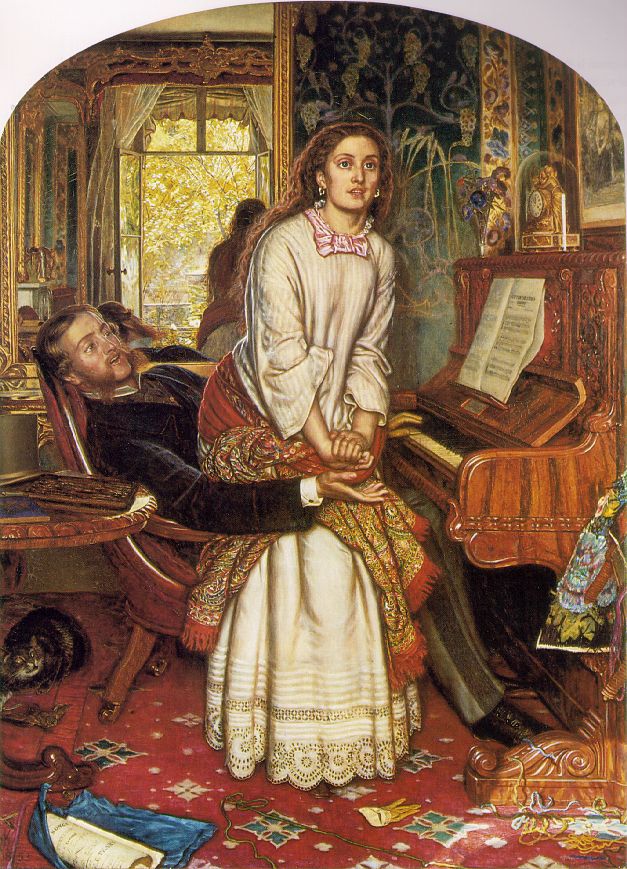To look at a Pre Raphaelite painting is to read a piece of literature; so intricate and detailed are these works of art. As a result, it is imperative to understand the common themes and motifs embedded in these paintings.
On a purely superficial level, Pre Raphaelite paintings are characterized by a certain boldness of colour, combined with an intricacy achieved through layering a blank canvas with minute details. These paintings tend to be dominated by images of women in various states of idealism or duress. In particular, the image of the ‘fallen woman’ is recurrent throughout Pre Raphaelite art.
Pre Raphaelite paintings tend to have some sort of moral message behind them, often mapping out the tainted path destined for women who succumb to temptations, particularly those of a sexual nature. This message is relayed through intricate details in the painting. For example, painters such as William Hunt would often use a piece of soiled clothing (most notably, a soiled glove)*, to indicate the presence of a tainted woman- one who had been unfaithful while married or unchaste before marriage. Augustus Egg’s famous series ‘Past and Present’ went a step further, showing an adulterer sitting by herself in the moonlight, leaving behind a wrecked family and orphaned children.
In the story, Lady Audley’s portrait is described as extraordinarily detailed, showing not only her physical appearance, but also her vindictive nature and brutality. It seems to have sharp colour contrasts- “Her crimson dress”, “the red gold gleaming in the yellow hair”, “the ripe scarlet of the pouting lips”. This is reminiscent of Pre Raphaelite art in its attention to detail and bold colour work. However, as discussed earlier, a Pre Raphaelite painting was never just something to hang above a mantelpiece; the use of this technique suggests something much deeper, lurking under the pretty colours- the presence of a ‘fallen woman’ in the portrait. Lady Audley, a bigamist and ‘madwoman’ is the very essence of a ‘fallen woman’. The bright reds and scarlets that she is painted with suggest a fire in her nature, something uncontrollable and vengeful, that only the layered detailing ability of a Pre Raphaelite painter could bring to the surface through just a picture.
*Shown in the uploaded image- The Awakening Conscience (William Holden Hunt, 1853)
